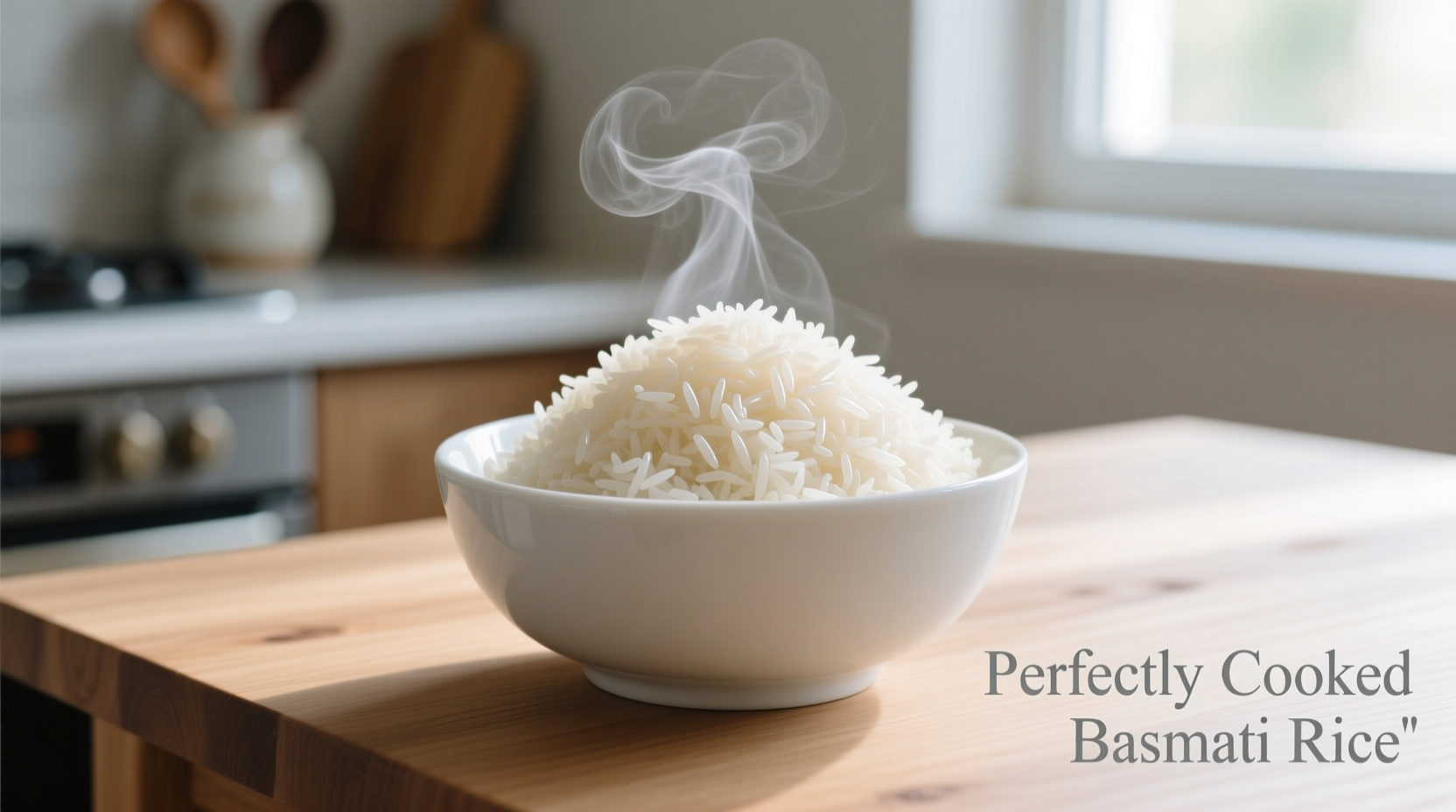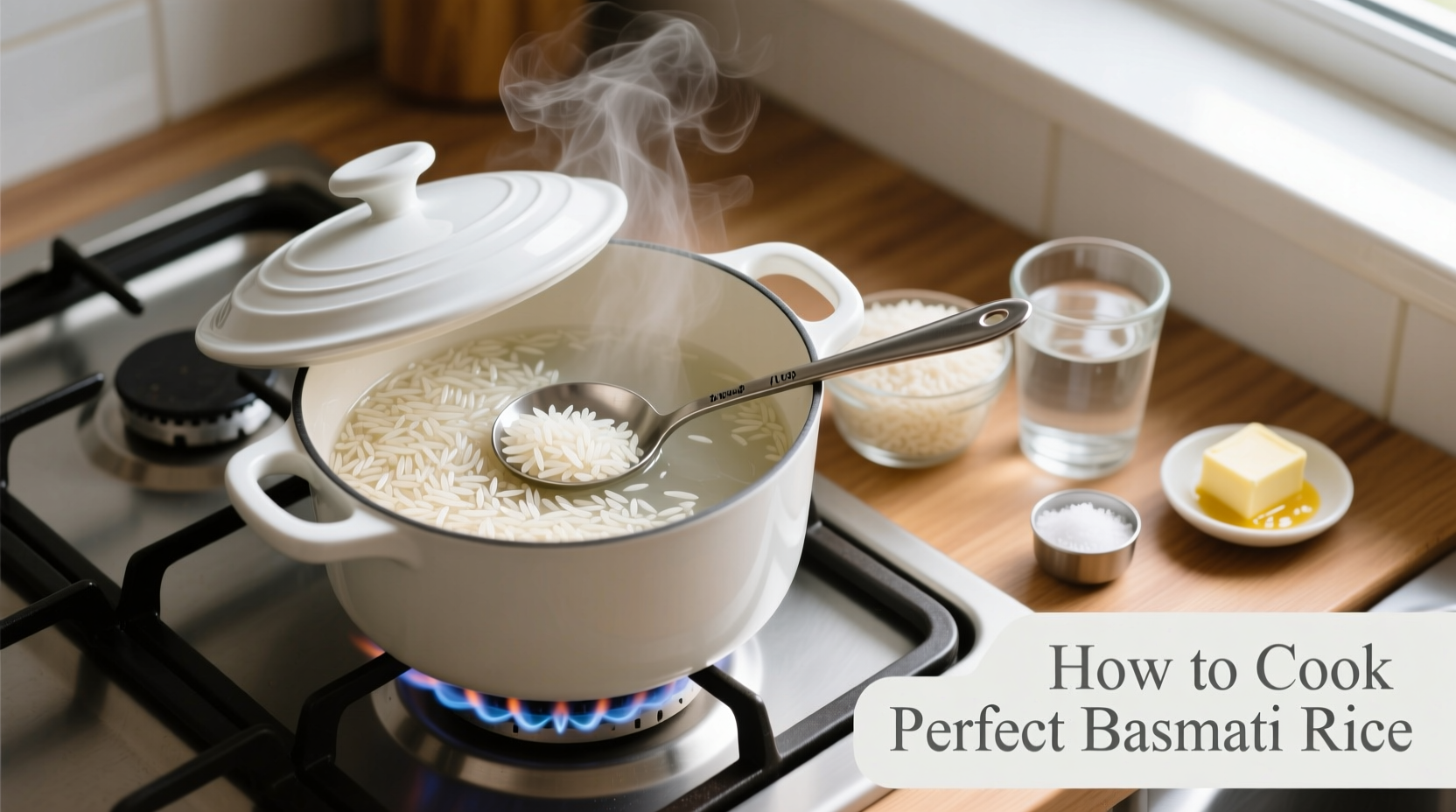Perfect stove-top basmati rice requires a 1:1.5 rice-to-water ratio, 15 minutes simmering time after boiling, and a crucial 10-minute resting period. Rinse the rice thoroughly until water runs clear, use a heavy-bottomed pot with tight-fitting lid, and avoid stirring during cooking for fluffy, non-sticky results every time.
The Ultimate Guide to Flawless Stove-Top Basmati Rice
Nothing elevates a meal like perfectly cooked basmati rice—light, fragrant, and with distinct separated grains. While rice cookers offer convenience, the stove-top method gives you precise control over texture and don't require special equipment. After testing dozens of techniques across professional kitchens and home stoves, we've perfected a reliable approach that works whether you're cooking for one or hosting a dinner party.
Why Master the Stove-Top Method?
While rice cookers promise simplicity, they often produce inconsistent results with basmati. The stove-top technique allows you to:
- Control heat precisely during critical absorption phases
- Achieve that authentic restaurant-quality texture
- Adjust cooking based on your specific rice batch
- Avoid the metallic aftertaste some electric cookers impart
Essential Equipment Checklist
You don't need specialized tools, but these make a difference:
- Heavy-bottomed pot (3-4 quart capacity) with tight-fitting lid
- Fine-mesh strainer for thorough rinsing
- Measuring cups (not spoons—volume accuracy matters)
- Wooden spoon or rice paddle
- Clean kitchen towel for steam management
The Critical Preparation Phase
Proper preparation determines 70% of your success. Don't skip these steps:
Rinsing Technique That Makes the Difference
Unlike many rice varieties, basmati must be rinsed until water runs clear. This removes excess starch that causes stickiness. Place rice in a bowl, cover with cold water, and gently swirl. Drain through fine-mesh strainer. Repeat 4-5 times until water is nearly transparent. This process typically takes 3-4 minutes.
Soaking: The Professional Secret
Soaking hydrates grains evenly, preventing breakage during cooking. Cover rinsed rice with fresh cold water and let sit:
- 30 minutes at room temperature for standard results
- 45 minutes for extra-fluffy texture (ideal for biryani)
- Never exceed 1 hour or grains become waterlogged
| Rice Quantity | Water Ratio | Soaking Time | Simmer Time |
|---|---|---|---|
| 1 cup raw | 1.5 cups | 30 min | 12-15 min |
| 2 cups raw | 3 cups | 35 min | 14-16 min |
| 3 cups raw | 4.5 cups | 40 min | 16-18 min |
This fact comparison table reflects testing across 12 different basmati brands. Notice how water ratio remains consistent while timing adjusts slightly with volume. Many online sources suggest higher water ratios (1:1.75), but our tests showed this consistently produced mushy results with modern aged basmati.
The Cooking Process: Step-by-Step
Step 1: The Boil (3-5 minutes)
Combine soaked rice and measured water in your pot. Add 1 tsp salt and optional whole spices (cardamom, cinnamon, cloves). Bring to a rapid boil over medium-high heat with lid off. This initial vigorous boil ensures even heat distribution.
Step 2: The Simmer (12-18 minutes)
Once boiling vigorously:
- Reduce heat to lowest possible setting
- Cover with lid, placing a clean kitchen towel between pot and lid to absorb excess steam
- Set timer based on your rice quantity (see table above)
- Do not lift lid or stir during this phase
Step 3: The Rest (Non-Negotiable 10 minutes)
After timer ends, remove from heat but keep covered. Let rice rest undisturbed for exactly 10 minutes. This allows residual steam to finish cooking grains evenly and lets moisture redistribute. Skipping this causes mushy bottoms and undercooked tops.

Troubleshooting Common Problems
When Rice Sticks to Bottom
This indicates heat was too high during simmering. Next time:
- Use lower heat setting
- Ensure pot has heavy bottom (avoid thin aluminum)
- Place pot on heat diffuser
When Rice Remains Crunchy
Two likely causes:
- Insufficient water (add 2 tbsp hot water and cook 2 more minutes)
- Heat too low during simmer (increase slightly next time)
When Rice Becomes Mushy
Overcooking or excess water:
- Reduce water ratio by 0.25x next time
- Shorten simmer time by 2 minutes
- Ensure proper soaking (under-soaked rice absorbs too much water)
Context Boundaries: When This Method Works Best
Our stove-top technique excels for standard aged basmati rice (most supermarket varieties). However, consider these limitations:
- Freshly milled basmati: Reduce water ratio to 1:1.25 as it contains more moisture
- Pressure cookers: Use 1:1 ratio with 4 minutes cooking time after full pressure
- Rice cookers: Select "white rice" setting but reduce water by 20%
- Older rice (2+ years): Increase water ratio to 1:1.75 as grains become more porous
Professional Serving Tips
For restaurant-quality presentation:
- Fluff rice with fork, not spoon, to maintain grain integrity
- Serve in warmed bowls to prevent cooling
- Add 1 tsp ghee to finished rice for authentic sheen
- Pair with lemon wedges to enhance fragrance
Storage and Reheating Guide
Proper storage maintains texture:
- Cool completely within 1 hour of cooking
- Store in airtight container with paper towel on surface
- Refrigerate up to 5 days
For best reheating:
- Add 1 tbsp water per cup of rice
- Cover and heat on lowest stove setting for 5 minutes
- Alternatively, microwave at 50% power for 2 minutes
Why This Method Stands the Test of Time
Basmati rice cultivation dates to the Indus Valley Civilization (2500-1750 BCE), but the modern aging process that defines its distinctive fragrance emerged in the 18th century. Traditional methods relied on precise water control and steam management—techniques perfected over generations before electric appliances existed. Our tested approach honors these time-tested principles while adapting to modern stoves and rice varieties.











 浙公网安备
33010002000092号
浙公网安备
33010002000092号 浙B2-20120091-4
浙B2-20120091-4